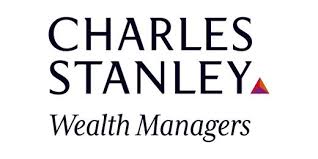This month:
Hunt for returns turns minds to alternatives
Alarm sounded over high-yield bonds.
UK student property hailed for defensive qualities.
Commodities slump creates value opportunities.
Equities favoured over bonds, but quality is key.
Featuring this month’s experts:
findaWEALTHMANAGER.com regularly taps the expertise of the UK’s leading wealth managers for the benefit of our users.
Looking ahead to February, market fundamentals, the fortunes of fixed income and the hunt for lower-volatility investments are top of the agenda, along with possible positives from the commodities slump.
Did high-yield investors have stars in their eyes?
Insights from:

Artur Baluszynski, Head of Research at Henderson Rowe says:
Last year’s suspension of redemptions in the Third Avenue and Stone Capital credit funds sent shockwaves through high-yield markets. Contagion from commodity markets quickly spread to other low-quality credits, triggering a wave of redemptions with fund managers selling what they could and not necessarily what they should! European and US High Yield bond markets are now down around 10% or 14%, respectively, from 2014 highs.
The two funds were at the high end of the credit risk spectrum and when sentiment changed investors changed their risk appetite too – some might say a classic case of a fund being marketed to the wrong customers, enchanted by the lure of high yields.
The banking system is in reasonable shape and regulators have a better understanding of underlying risks. However, negative sentiment can snowball very quickly and infect other asset classes, especially lower-quality debt.
We identified these problems and their potential impact on our clients’ portfolios in mid-2013, resulting in us selling our high-yield bond ETFs and drastically cutting our emerging market bond exposure. While many macro-driven investors focused on the relative valuations of junk bonds versus other fixed income assets and chased attractive yields, our bottom-up approach made us question what was on offer. When you overemphasise asset allocation driven by expected returns, you forget to look under the bonnet and – like a driver relying on a faulty GPS – can end up in a river or a lake.
The Fed’s comments following the December interest rate announcement indicate gradual hikes over the next 12 months and our fixed income portfolios are well positioned for that. Bloomberg forecasts the Federal Funds target rate at 1.25-1.50% by Q1 2017. We are closely watching commodity and energy markets, which we believe could offer the best bargains in 2016. Our duration is close to five years and our average yield is around 4%.

Artur Baluszynski
Head of Research at Henderson Rowe
Real potential in student property
Insights from:

James Burns, Partner at Smith & Williamson, says:
The UK student property sector should provide relatively defensive but attractive returns in the form of income plus some capital growth for investors, benefiting, as it does, from a strong supply/demand imbalance. Despite the introduction of higher tuition fees in 2012 and concerns over the weaker economic environment, demand for further education in the UK has remained robust.
The number of students seeking university places, domestic and international, is at all-time highs, having seen 42% growth over the past 10 years*. Additionally, Government caps on student numbers were softened in 2014/2015, allowing for another 30,000 students from the EU; the cap was removed altogether for 2015/2016. By 2025, the number of international students, globally, is expected to double.
With these trends in mind, it is worth considering that availability of purpose-built accommodation remains well below student numbers in key UK university cities: 91% of students beyond their first undergraduate year have no access at all to purpose-built accommodation and 7% of students already live in private sector purpose-built student accommodation*. The limited number of student property funds are providing much-needed stock to the market, and reaping the benefits of doing so.
To play this theme we like Empiric Student Property. This is a REIT (Real Estate Investment Trust), listed on the Main Market which directly lets purpose-built apartments to predominantly overseas and mature students in central locations within the most popular university towns in the UK. The Company targets a 6p dividend, growing in-line with the RPI (Retail Price Index), which is fully covered by income. Although it performed strongly last year, I believe Empiric should be well placed to benefit from current trends, and to continue to deliver on both capital growth expectations and the target dividend. In what, I believe, could potentially be another tricky year for investors, this type of lower volatility return profile could prove to be extremely attractive.
* Source: UCAS, ESP, Savills, HESA 2015

James Burns
Partner at Smith & Williamson
Consider the positives of the commodities slump
Insights from:

Rob Morgan, Pensions & Investment Analyst at Charles Stanley, says:
Have markets gone too far in expecting interest rates to remain on hold until the second quarter of 2017? The Bank of England’s recent decision to leave interest rates on hold for the 83rd month in a row was unsurprising given the recent fall-back in the oil price and renewed market concerns about the health of the global economy.
Rather than stabilising in the $40-50 a barrel area that many expected last year, which would mean the deflationary effect of energy prices starts to fade, the further falls to below $30 is setting up persistent disinflationary pressure across developed economies. In December 2015 the crude price averaged some 39% lower than a year earlier, broadly the same as the annualised decrease registered in December 2014. All other things being equal we must expect annualised rates of increase in headline inflation to fall again, back towards zero in some cases and below it in others. Despite more positive trends in employment data, interest rates are likely going nowhere fast meaning poor rates on cash deposits for the foreseeable future.
Yet where can you find a better return? Investing in such an environment is not easy and requires careful consideration. January has served as a warning to investors to expect volatility. There are certain sectors and individual companies where earnings and dividends remain under pressure, not least the commodity and energy space. Yet markets have recently become cheaper after the sell-off. Having traded well above 7000 in April 2015, the FTSE 100 is close to 5900 as I write and yields over 4%, which surely compares favourably to bonds where yields remain slender and no potential growth in income is on offer.
To optimise returns, a selective approach to both sectors and individual companies appears best. Lower oil prices should provide support for some areas of the global economy, and could surprise investors that have focused more on the negative consequences of the commodity slump than the positive impact on consumer behaviour, notably in oil importing countries.

Rob Morgan
Pensions & Investment Analyst at Charles Stanley
Why avoiding losers is a winning strategy
Insights from:

John Langrish, Head of Investments at James Hambro & Partners, says:
Donald Trump has frequently made bold, outspoken and often controversial comments on all manner of issues, but there at least appears to be a kernel of wisdom in his quotation regarding investments. He said: ‘Sometimes your best investments are the ones you don’t make’.
It is at least as important to avoid the pitfalls of those investments that have the potential to permanently lose you capital, as it is to identify and back the winners. The past year has been one in which to avoid emerging markets and commodity-related investments, while stocks that enjoyed upgrades and outperformance in 2014 largely continued to do so in 2015. What does the prospect of the current year bring?
With the US and UK further along the road to recovery, we have moved slightly underweight these two equity markets and followed the path of quantitative easing towards European and Japanese equities.
Elsewhere, the Chinese slowdown from double-digit to mid single-digit growth is having a knock-on impact on its regional trading partners and commodity-producing countries, hence our reduced exposure to Asia-Pacific and zero allocation to emerging markets. We are not tempted back into these areas yet, as there could be further uncertainty to come from China.”
We continue to believe that, over the long term, we can obtain a better overall income and capital return from equities than bonds, through investing in a selection of excellent businesses, run by superior management teams.
As an insurance against our central case and any heightened near-term volatility, we maintain prudent exposure to stabilising assets, such as index-linked bonds, absolute return funds, infrastructure and cash.

John Langrish
Head of Investments at James Hambro & Partners
Important information
The investment strategy explanations contained in this piece are for informational purposes only, represent the views of individual institutions, and are not intended in any way as financial or investment advice. Any comment on specific securities should not be interpreted as investment research or advice, solicitation or recommendations to buy or sell a particular security.
We always advise consultation with a professional before making any investment decisions.
Always remember that investing involves risk and the value of investments may fall as well as rise. Past performance should not be seen as a guarantee of future returns.
